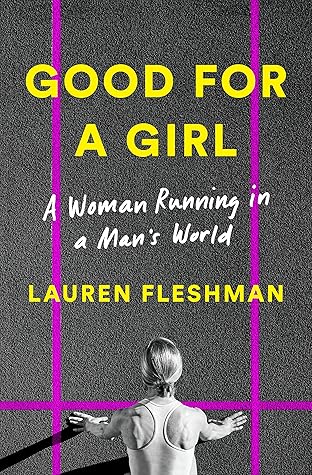More on this book
Community
Kindle Notes & Highlights
Read between
January 17 - January 22, 2024
That’s why I’ve written this book. After twenty-seven years in sport as an elite athlete, teammate, coach, and parent, my own personal story offers more than enough evidence that something is wrong; the start of some solutions emerge, too. My story is not representative of all women and girls, and any comprehensive discussion about changing women’s sports must include the voices of all who compete in that category, including women of color, women with disabilities, trans women, and people who don’t fit within the gender binary.
Today women make up 40 percent of the athletes in the United States but receive only 4 percent of the sports coverage, about the same as it was thirty years ago. The front page of the sports section is more likely to feature a male sports fan than a professional female athlete. Less than 1 percent of endorsement investment in professional sports goes to women.
A culture of compliance leads to disassociation from yourself, from your body’s signals of hunger, fatigue, and pain.
I thought about how nearly all the famous coaches and top professors I knew of were men in similar positions. Women made great men possible. What made great women possible? Avoiding the vortex of a man’s ambition? Being alone?
It takes guts to put yourself out there when your body doesn’t match the ideal, and to keep doing your best when your best isn’t what you hoped for, or what others expected. There was value in that. I wish teams celebrated this more.
The NCAA does not have any female-specific policies or best practices for the issues that disproportionately befall them within the collegiate sporting environment, at least none that I could find. In the bylaws and policies, sex is minimized to the point of erasure. Caroline Criado Perez discusses this ubiquitous cultural pattern in her prizewinning book Invisible Women, explaining how a gender gap in data perpetuates bias and disadvantages women. The assumption of sameness naturally prioritizes the male body as the default.
Title IX opened a door fifty years ago that can never be closed again. But equality doesn’t end at the equal right to play. True equality in sports, like any other industry, requires rebuilding the systems so there is an equal chance to thrive.
We need policies like those created around concussions that specifically protect the health of the female body in sport. We need to create a formal certification to work with female athletes that mandates education on female physiology, puberty, breast development, menstrual health, and the female performance wave. We need to be able to monitor menstrual health and educate people about RED-S. We need to draw boundaries preventing race weight and body composition from being emphasized in high school or college, or any time before it is developmentally appropriate. We need eating disorder
...more
We need coach job descriptions to be compatible with having children so fewer women leave coaching, and so coaches of all genders have the ability to be active partners and parents. We need breast education and a free sports bra for every middle schooler who wants one. We need adults to deal with their own issues around food and body so they don’t pass them on to the children and young adults in their care. We need to comb through the rule books of all the sports and eliminate existing rules mandating uniform styles known to increase self-consciousness and lower body satisfaction, and
...more


